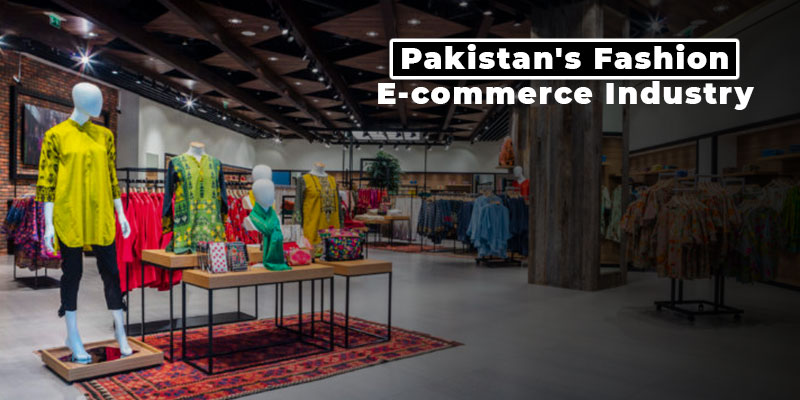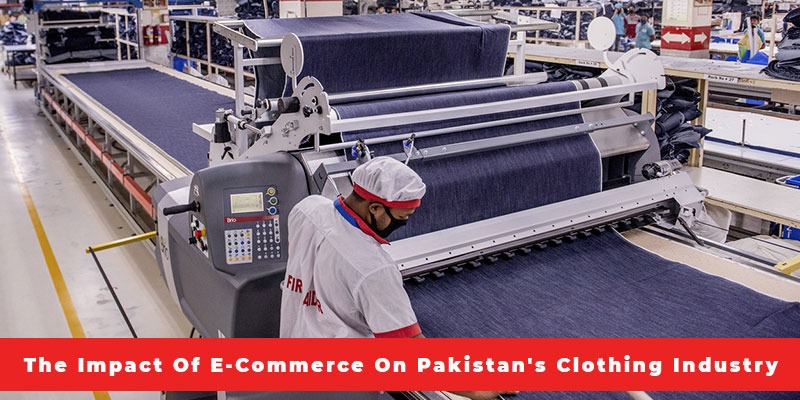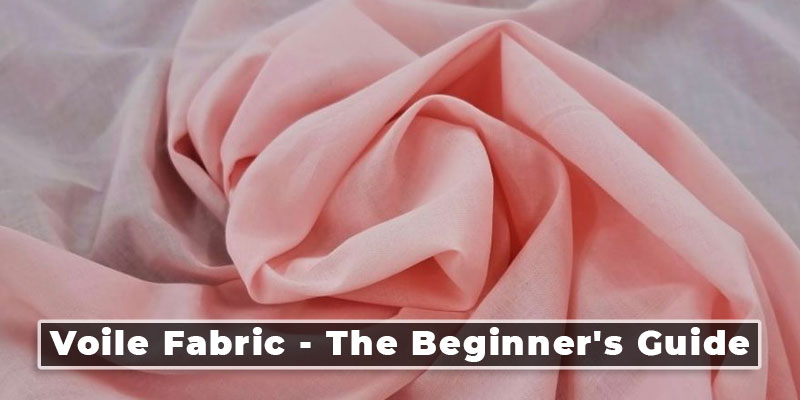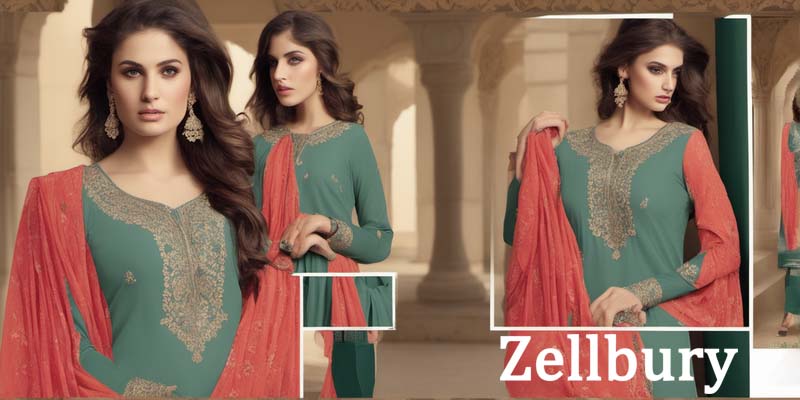Pakistan's Fashion E-commerce Industry: A Market Ready for Takeoff

The Success of the Pakistani Fashion Industry
Pakistan’s fashion e-commerce is an ever-evolving industry in Pakistan. With cotton being one of the major productions of the country, Pakistan has become one of the major exporters of cotton and cotton products. Couture and apparel being the major products of cotton, it is only fitting that Pakistan’s clothing market has been and keeps booming with little regard for geopolitical and economic conditions.
Cotton is nature’s gift to this piece of land, and its traditional & conventional finished products are used in Pakistan as well as exported to developed economies around the world! Fashion here is more than just a business. It reflects Pakistan’s heritage, culture, and abundance of agriculture. A lot of value goes into designing and weaving ingrained in the process of producing Fashion. Pakistan’s fashion greatly contributes to the country’s GDP. So many SMEs emerge and evolve into corporate giants, with their commitment to producing quality and dedication to excellence, both physical and online clothing.
This automatically means that the Fashion industry in Pakistan holds a lot of potential that will continue to rise in the coming years, due to evolving fashion trends.
The Rise in E-Commerce
We all witnessed that E-commerce in Pakistan enjoyed a massive boom during the lockdown era. As scared of COVID-19 as we were, people were stuck in their homes bored. So home-cooked meals and shopping especially Pakistani apparel online,
were their best friends to kill time. Before the year 2020, E-Commerce existed but was only about 5% of the total business in Pakistan. After the huge changes that we witnessed in almost every sector, businesses and individuals alike realized there was very little need to move from home to physical shops and stores. Instead, businesses could cut a big chunk of their cost by not paying shop rent, maintenance, and electricity bills, and save daily fuel costs by shifting their warehouses and services online! All of this in effect gave rise to the boom of E-commerce opportunities in Pakistan, which continues to have its impact to date. Fashion e-commerce in Pakistan was no different!
Pakistan’s E-commerce Market
For those of you who are unaware, E-commerce is the activity of electronically buying or selling products on online services or over the Internet. Pakistan being among more traditional countries, has taken long enough to shift towards e-commerce growth. More than ever people have shifted towards buying from home whether it is Kid’s, Women’s, or Men’s Fashion clothing online, people like to buy from brands online. We don’t blame them. Pakistani designer wear available online is among the best ethnic and traditional wear brands available out there. The variety is a big plus! Both in terms of products and price ranges. For example, Zellbury always has and continues to provide affordable fashion e-commerce to the Pakistani public.
Some examples of Online plus offline fashion stores in Pakistan include:
Sapphire, Khaadi, Nishat Linen, Limelight, Gul Ahmed.
Challenges in Pakistan’s E-commerce Industry
Pakistan’s Fashion E-commerce Industry like in any other country has its challenges that need to be addressed. Some of these challenges can be solved with a slight change of strategy. And some of these will see improvement with time as the industry progresses.
Regulation
One of the main pain points of small and large enterprises in the Fashion E-Commerce industry is that the industry is not a regulated one. Meaning, there is a lot that goes on around these apparel brands that affect them, but there is no legislation or responsible legal body to put a hold on things, or at least regulate them. For example, the statistics about the brand’s revenue are something often lied about around in this industry, These lies are spread by sometimes employees, owners, and othertimes even by people who have nothing to do with these brands, instead, they just want to post fake statistics to create a credible existence on LinkedIn.
Inflation
Another one of the main challenges is dollar fluctuation. With inflation rising and the dollar fluctuating, apparel brands now have to pay huge taxes on their sales that don't always translate into the prices of their products. Especially now, after the most recent inflation rise, brands have had to take a partial hit so that consumers don’t have to take the whole hit of inflation in the form of product prices. This is the solution brands have succumbed to to maintain sales volume.
Logistics
Logistics poses one of the biggest challenges faced by all apparel brands. 3PLs (3rd Party Logisticians) are not nearly as effective as the brand’s personal delivery service, but the volume of sales is not something that the brands can handle on their own. Most of the 3PLs working with apparel brands do not specialize in fashion clothing. Hence their handling, transportation, and dealing with the customers is not up to the mark. Some brands are bettering the situation by working with more than one 3PL at a time. This lowers the burden upon the logisticians as well as allows the apparel brands to compare and contrast the services of different logisticians and encourage best practices. The downside to this: there is no consistency in the delivery services by the brand. The customer experience which has a direct impact on the brands’ sales and repute, gets neglected by some if not all the 3PLs. Some of the brands have responded to this challenge by developing an in-house logistics team. But that is a costly option that not all of the brands can afford due to limited time, staff, and financial resources. The best case scenario would be to hire and train an in-house team, but that is going to be a fixed cost, too big to pay for the small number of sales and individual brand makes.
Retail vs online
Retail vs online continues to be a debate with no final answer. Every apparel company has to decide what percentage of its stock would be reserved for online sales and stores, and what percentage would be kept for the physical outlets. Brands’ internal teams are unable to come to a point of consensus because both the digital retail and online teams want maximum stock reserved for themselves because greater stock equals higher sales commission. Brands need to revise their commission strategy and find ways to make sure no one’s hard work gets wasted, and that a close-to-perfect percentage of Fashion Retail vs Online is established.
Omni Channel
If you are up to date with your E-commerce knowledge, you must know about Omni Channel. Omni channel is the new black in the fashion industry of Pakistan. Most leading brands are converting to the Omni model from the multi-model.
For those of our readers who don’t know, the multi-channel model means using all platforms like SM platforms, messages, comments, third-party sellers, and brands’ websites to engage, interact, and respond to the customers and potential customers. Omni channel means the same but where all of these platforms are interlinked and synced. This means that when an item is sold in a physical retail store, it will automatically be labeled as sold/out of stock on the brand’s website or app, and vice versa. This also means that by adopting to omni model, it is highly likely that we would get past the debate of ‘Retail vs Online’ very easily.
Third-Party Platforms
Konjae has provided a perfect solution for the issue with logistics and warehouses. Although Konjae is categorized as a ‘third party platform’, it provides extremely reliable, fast, and efficient logistics support. The only catch is that the customers order from Konjae’s platform.
Konjae is a platform that has clothing collections from all the best small, medium, and large apparel brands in Pakistan. Any client/customer that orders ladies' or gents’ clothing from Konjae, gets it on wholesale rates. Consumers enjoy discounted prices and businesses buy from us to re-sell the clothes at full price and earn profits.
Konjae’s model has encouraged hundreds of small business owners to start doing business in Pakistan’s rich Fashion Industry. We have empowered hundreds of housewives and businesswomen who want to work from the comfort of their homes.
Future of the E-commerce Fashion Industry
- Pakistan's e-commerce future in the fashion industry looks bright, although we are still determining the details of it for a longer time since fashion e-commerce trends keep evolving. There is a new big thing in the market after almost every 2-3 years.
- Even though Pakistan's growth of e-commerce in Pakistan due to online shopping trends has significantly upgraded in the past years, E-commerce cannot overthrow the retail physical business anytime soon. The reason is, that the majority of buyers prefer buying physically.
- Omni channel is the next best thing being promoted and adopted by most brands since it offers a solution to many existing problems in the industry.
- Augmented Reality Photography is developing but the feel of it is not real enough to replace actual models and photography yet. But we never know, as fast as technologies develop, maybe we’ll have the best AR photography in a couple of months!
Conclusion
The Fashion Industry in Pakistan has always been and always will be a field with immense potential. Thanks to the favorable climate and fertile soil of this country. Pakistan's online fashion market size is big, but bigger is the size of the international market! However, to excel at what you do with your clothing brand, you need to stay updated, solve existing problems using creative solutions, keep an eye on what your competitors are doing, and if it is working well for them, keep adopting to latest technologies that align with your brand’s personality and maintaining a balance of ‘Retail vs Online’ that suits your brand and it’s needs best. Every apparel brand is different yet there are a lot of things that are similar among them. Make sure you do your research, budget analysis, and test runs before making major changes in your business.
Konjae wishes you the best of luck!
FAQs
Q1: What is the current state of Pakistan's fashion e-commerce industry?
Ans. Pakistan's fashion e-commerce industry accounts for 18.3% of the total e-commerce market in Pakistan
Q2: What are the key drivers of growth in Pakistan's fashion e-commerce market?
Ans. The main drivers are GDP & consumer spending per capita, internet penetration, and population in Pakistan
Q3: Which cities in Pakistan have the highest demand for fashion e-commerce?
Ans. Multan, Sialkot, Karachi, and Hyderabad are recognized as a growing city for e-commerce in Pakistan.
Q4: What are the most popular fashion e-commerce categories in Pakistan?
Ans. The most popular e-commerce categories are
- Clothing
- Electronic Items
- Cosmetics
- Gadgets
- Home Decor
- Bedding
- Bags
- Islamic Accessories
Q5: How do Pakistani consumers prefer to pay for their online fashion purchases?
Ans. For online shoppers in Pakistan, COD is the most preferred payment method.
Q6: What are the biggest challenges facing Pakistan's fashion e-commerce industry?
Ans. The biggest challenges faced by Pakistan’s fashion e-commerce industry are Digital illiteracy, Lack of trust in online payment methods, and inefficient and outdated logistics networks.
Q7: How can Pakistani fashion e-commerce companies improve their customer experience?
Ans. A key factor is consistently providing an efficient and transparent shopping experience & delivery process.
Q8: What is the future outlook for Pakistan's fashion e-commerce industry?
Ans. This market is projected to have an annual growth rate of -1.32% (CAGR 2024-2028)



.jpg.jpg)



